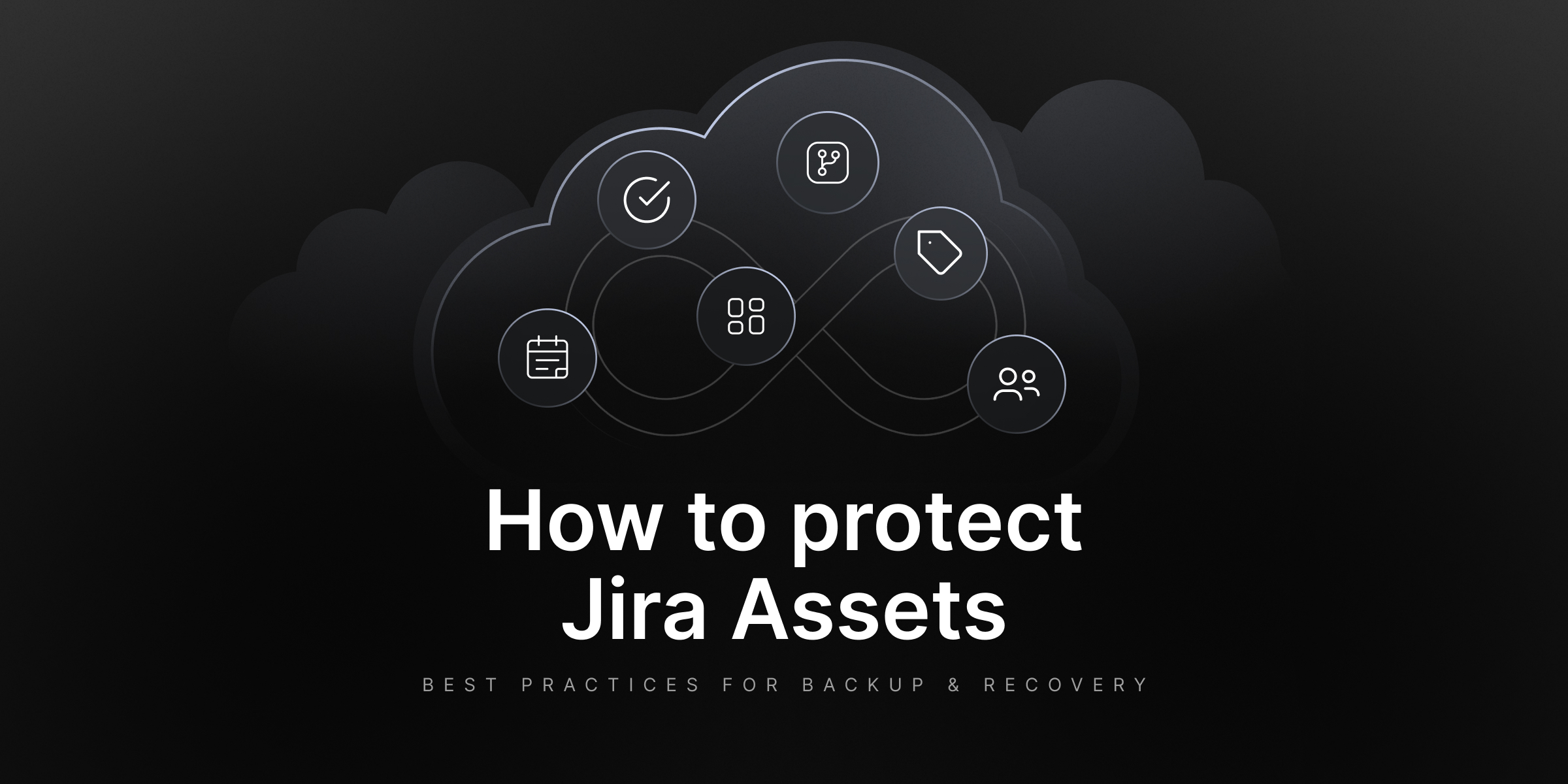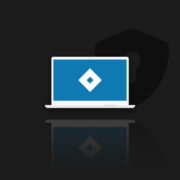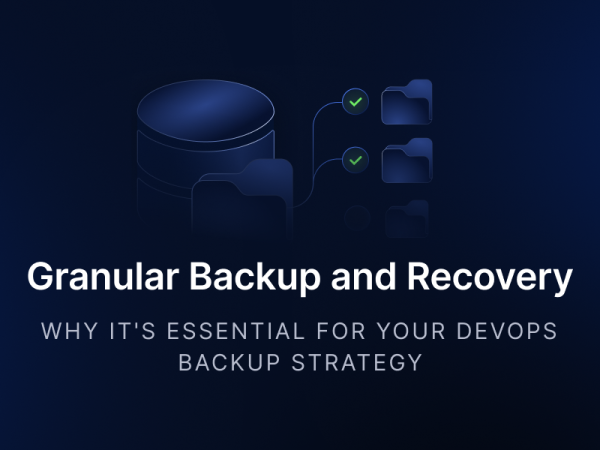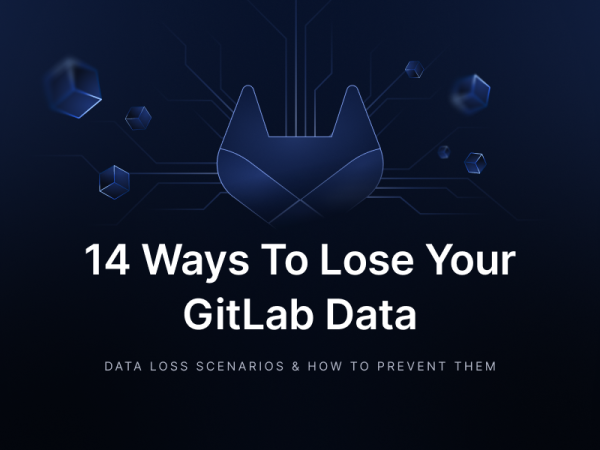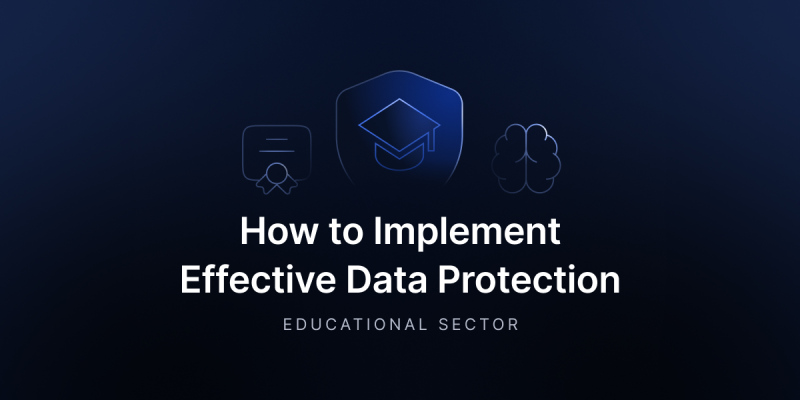
How to Implement Effective Data Protection in the Education Sector
As education platforms embrace DevOps, missing backups in the overall data protection strategy will expose systems to outages, data corruption, ransomware attacks, and prolonged recovery times.
Let’s break down how backing up data securely can shield education technology, with immutable storage, unbreakable encryption keys, and flexible recovery. and what problems organizations may face when backup and disaster recovery of such critical systems is overlooked.
DevOps in the education sector
Nowadays, DevOps is often used by educational institutions for things like grading, online lessons, digital learning platforms, as well as servers and managing data pipelines. DevOps supports educational organizations with CI/CD pipelines to streamline work, collaboration, and ensure continuity.
However, with all these benefits come new risks in terms of data. For starters, schools and universities deal with a lot of sensitive data. Threats range from ransomware attacks and human errors like misconfigurations to platform outages that can leave students, teachers, and admins unable to access necessary data.
The state of threads in the education industry
Educational institutions, as of 2025, are like tech-powered companies – with servers, networks, SaaS applications, cloud environments, and data pipelines running platforms, supporting lessons, and simplifying administrative processes. There are different kinds of software that schools and universities rely on for building, deploying, maintaining, and securing complex infrastructures.
One example of DevOps tools supporting education systems’ processes is project management with Atlassian’s Jira. But this technological convenience comes with its risks – education software by itself is susceptible to service disruptions, data loss, ransomware attacks, and human error. The more distributed and automated EdTech (Education Technology) platforms are, the more pressing it is to make backups a core architectural layer for resilience and business continuity.
In hindsight, the Sophos’ State of Ransomware in Education 2023 report concludes that:
“73% in lower education used backups for data recovery, while almost half (47%) paid the ransom. Higher education was among the bottom three sectors globally for backup use, with only two-thirds (63%) reporting the use of backups for data recovery. The sector also reported one of the highest rates of ransom payments for data recovery at 56%.”
In 2024, Forbes reiterates that malware and phishing attacks continued to rise, placing the education sector as the fifth most targeted industry by cybercrime. Fast forward to 2025, Q1: cyberattacks on businesses still continue to rise, with the education sector hardest hit at an average of 4,400+ weekly attacks, followed by the Government and Telecommunications sectors.
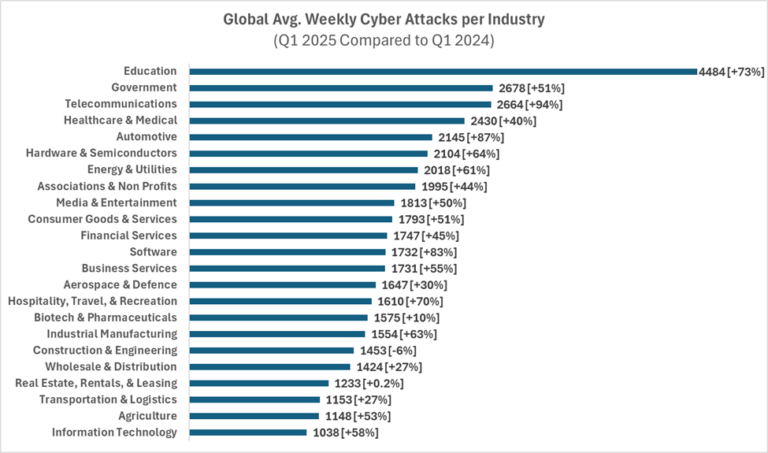
Source: Check Point
Cyber threats are on the rise, which is why there is DevOps backup for data protection. For the education sector, backing up software workflows and systems means supporting grading, syllabi and program curricula, payments, and student application processes.
Without source code, you cannot redeploy your platform, fix bugs, or restore core functionality. To protect code and metadata, it is important to understand the shared responsibility model of cloud and SaaS providers, which outlines how backup and recovery are the user’s responsibility. Your data with DevOps service providers like GitLab, GitHub, Azure DevOps, and Atlassian is at risk of service outages, human errors, and cyberattacks, which can be damaging if you don’t back up your environments.
According to the DevOps Threats Unwrapped Mid-Year Report 2025:
- GitLab experienced 59 incidents, totaling approximately 1,346 hours of disruption.
- Azure DevOps experienced 74 incidents, with performance degradation that lasted 159 hours.
- GitHub had 17 incidents classified as major, causing over 100 hours of total disruption.
- January 2025 is marked by a major almost 4 hour outage of Bitbucket service, taking down its website, APIs, and pipelines offline.
These providers can only be responsible for the code and data that support their service, which leaves your code repositories, along with metadata hosted on a given platform, in your hands.
Using GitHub, GitLab, Azure DevOps, or Atlassian’s products? Learn more about the Shared Responsibility Model for the platform of your choice:
📌 GitHub Shared Responsibility Model
📌 GitLab Limited Liability Model
📌 Atlassian Cloud Shared Responsibility Model
📌 Azure DevOps Shared Responsibility Model
When git repositories are attacked, you’ll feel it
While software development and collaboration are simpler with DevOps environments, there’s no product without code. This formula is familiar to you.
But what if you need to recover your operations using that code, but you don’t have the right copy to revert to or an alternative storage to go to? EdTech vendors risk exposing their entire platform to downtime, code tampering, and slow recovery from breaches.
In early 2025, Pearson suffered a major cyberattack in which threat actors gained access via an exposed GitLab Personal Access Token embedded in a publicly accessible .git/config file, allowing them to exfiltrate terabytes of data, including legacy customer records, support tickets, financial information, and source code across cloud infrastructure (e.g. AWS, Google Cloud, Salesforce). The compromise of developer credentials and proprietary infrastructure showed how unchecked code exposure can lead to wide lateral access and long-term data theft.
When vulnerabilities are disclosed, verified recovery becomes critical
You’ve automated deployments. You’ve scaled in the cloud. Your education platform is agile, flexible – yet, still vulnerable. Think of these scenarios:
- A misconfigured deployment can bring down a platform.
- A corrupted container image can compromise multiple services.
In 2024, researchers uncovered several critical security flaws in Moodle, an open-source learning management system used by schools and universities worldwide. These vulnerabilities could allow unauthorized users to see private information such as student roles, personal names, or sensitive records. While patches were still underway, institutions that hadn’t applied updates yet remained at risk. Some flaws also opened the door to cross-site scripting (XSS) and cross-site request forgery (CSRF) attacks, which could let hackers manipulate the system or steal information.
When disruptions impact learning outcomes, resilience must be proactive
In January 2025, Blacon High School in Cheshire temporarily closed after a ransomware attack locked staff out of essential systems. The IT team couldn’t recover the data fast. So, teachers had to wait for devices to be cleansed and re-plan lessons from scratch, while students were shifted to remote learning via Google Classroom.
Backups could have made a major difference here, allowing the school to rapidly restore the compromised systems to a clean version.
When backups align with regulations, systems can self-sustain
In a heavily regulated EdTech world, backup is no longer optional or siloed; it’s a compliance pillar. Since education technology platforms deal with children’s or adults’ data, software falls under compliance regulations active in its geographies. Additionally, when education platforms expand globally, they face a growing number of privacy and cybersecurity regulations that directly impact how data is stored, protected, and recovered. From the EU’s GDPR and DSA to the U.S. FERPA, COPPA, CIPA, to the Australian Cyber Security Strategy, and, finally, global standards like ISO 27001 and SOC 2 Type II, the message is clear: resilient, secure, and transparent data handling is non-negotiable.
EdTech platforms must meet several core requirements across five critical points to ensure compliance: data protection, accessibility, cybersecurity, service availability, and incident reporting policies.
EdTech platforms must implement role-based access, secure authentication, run audit trails, and ensure uptime continuity to meet continuous education delivery and legal standards alike. Frameworks like NIS 2 and DSA raise the bar even higher, requiring failover capabilities, vulnerability management, and infrastructure resilience.
Whether it’s restoring student data post-attack or ensuring uptime for assistive technologies, backup and recovery must be fast, compliant, and verifiable.
When backups are solid, assurance follows
Once service outages, code tampering, and data loss ripple across classrooms and institutions, poor backups can’t keep up. So, finding a multifaceted backup solution is as precious as the time you can save and data you won’t lose during a disaster.
Cyber security breaches survey 2025 finds that 570+ educational institutions across the board suffered breaches or cyber attacks in the UK, which is 26% (or 1/4) of all breaches across industries combined, which proves malicious attackers’ interest in EdTech and its yet-to-be-addressed vulnerabilities.
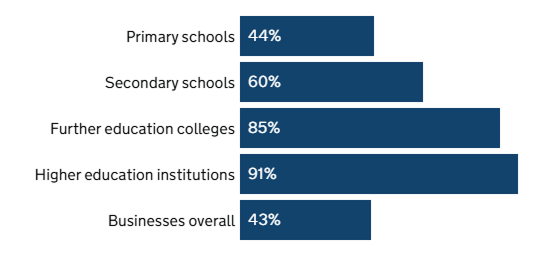
Source: Deep Strike
Therefore, ransomware alone can cost UK schools up to £3 million per demand, with overall ransom pay ranging from £50,000 to over £5 million.
In early 2025, U.S. EdTech giant PowerSchool reported a major breach affecting its systems, potentially exposing the personal data of more than 62 million students and 9.5 million teachers across North America. The attacker used a single compromised credential on a portal without MFA to access PowerSchool’s systems, moving from its support portal into the Student Information System to exfiltrate massive amounts of student and teacher data. While the company won’t disclose how much this data breach cost them, in 2024 alone, ransom ranged from $5,000 to $40 million, with an average being just under $1.4 million.
For companies embracing DevOps and cloud infrastructures, protecting repositories should be the top priority, because relying only on some local, secondary copies or snapshots is not a comprehensive backup plan in case of a breach or attack.
How GitProtect secures EdTech and establishes resilience
With GitProtect, educational institutions can recover source code and essential metadata instantly after misconfigurations or service disruptions. GitProtect backs up DevOps and project management data across GitHub, GitLab, Azure DevOps, Bitbucket, and Jira with fully automated, policy-based, scheduled backups to meet even the most strict RTO and RPO objectives. SaaS and on-premise deployment options, along with data residency in the EU, the US, Australia, or custom locations, ensure compliance with industry standards. Flexible or unlimited retention keeps backups aligned with academic cycles, legal rules, and operational needs.
Examples of how educational institutions can benefit from using GitProtect backup and Disaster Recovery software? Wharton School of the University of Pennsylvania is the world’s first business school that started using the cloud to deploy their services and Bitbucket for managing source code. They wanted reliable backups and chose the GitProtect platform to leverage a solid, easy-to-use backup solution for Wharton Computing, eliminating the need for custom scripts and ongoing maintenance.
“I can set up a backup plan and have a high level of confidence that it is going to work. I worked with other backup products for different IT services and never felt [until now] comfortable that the backup plan was going to work as expected.”
— Antonio Enrique Vivas, the IT Director at Wharton Business School
Accidental deletions, repository corruption, and outages can all interrupt the learning processes; that is why GitProtect helps to secure the DevOps tools utilized by the educational institutions. Automated backups of source code and metadata, along with flexible recovery, ensure continuous security and availability for digital education. The same goes for Atlassian’s Jira — widely used for collaboration and project management — when a single deletion or attack can disrupt entire workflows, there is a necessity to implement mechanisms that allow you to get back online instantly in the face of any incidents.
Summary
The best kind of cheat is beating data loss and cyber threats before they start. When you rely on DevOps platforms to accelerate development – security and resilience must follow.
With the adoption of DevOps platforms like GitHub, Bitbucket, GitLab, or others, digital education environments inherit the same operational risks as any tech-driven enterprise. From pull requests to critical infrastructure code, every commit carries weight. Without reliable, automated, and immutable backups, even a minor glitch or attack can escalate into major disruptions.
Build smart, deploy fast – but always back up like everything depends on it. Because someday, it just might.
[FREE TRIAL] Ensure compliant backup and recovery of critical DevOps data with a 14-day trial 🚀
[CUSTOM DEMO] Let’s talk about how DevOps backup & DR software can help you mitigate the risks



